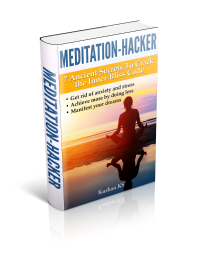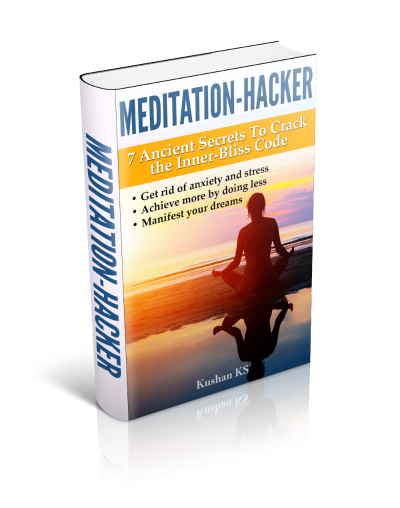Body Scanning Meditation
"I say unto you: The body is your greatest friend. Take care of your body" - Osho

The body scanning meditation technique is great for beginners as it quickly re-establishes the lost link to the body.
We spend so much time locked up in our heads that we barely pay attention to our body's needs.
At least not until its too late and only after having fallen prey to a disease.
Paying close attention to the body on a regular basis allows it to express itself. This ability to express calms and relaxes the body and leads to self-healing.
The natural state of the body is that of homeostasis and it is fully capable of achieving it on its own.
All we need to do is to become friendly toward it and start looking after its needs.
One easy way of achieving this is by doing body scanning meditation. It has two slight variants, but you can do both together, if you so like.
This is how you do it:
- Start at the crown of your head and focus all your attention on what you feel or do not feel there
- Take your time, waiting to see if there is something going on which you have never really bothered to observe earlier - a pulse, a tightness or an itchiness?
- Do not attempt to 'find' something, just simply observe with full
attention. And whatever you find, keep observing without letting your mind run wild with speculation - If you don't find anything even after a couple of minutes of observation, it is perfectly OK. Move on
- Shift the focus down to your face starting with your forehead. How does the skin on the forehead feel? Is it tight or relaxed? Rough or smooth? Warm or cold? Any tingling sensation, numbness, or any pulse?
- Move to your eye-lids, cheeks, lips, chin, neck, shoulders and all the way down to your toes
- Try and notice the smallest sensation but don't get 'caught up' in it. There is no room for speculation here. No craving and no aversion to whatever you experience
- Just observation. Pure presence
It will be difficult, but if you persist, you will get the hang of it.
The other variant of body scanning meditation involves a sequential contraction and relaxation of specific muscle groups throughout the body.
Start at the crown of your head again and pull the skin/muscles there to the back of your head. Feel the stretch. Then relax and observe the sensations. Do the same with your forehead, cheeks, jaws and so on till you reach the toes.
Inhale, contract, exhale and relax.
Each time paying careful attention to the sensations in the body parts, prior to contraction, during contraction, during relaxation and post relaxation.
If you are someone who prefers kinesthetic meditations that actively engage the body during the meditation practice, then look up qigong and walking meditation too.
Return from Body Scanning Meditation to Beginners Guide

Get my book, Meditation-Hacker: 7 Ancient Secrets to Crack the Inner-Bliss Code and receive valuable information on meditation that you can use to improve the quality of your health and life.


Comments
I would love to hear your meditation experiences. And, if you are a beginner, your questions and apprehensions about meditation. Comment below or contact me directly through the navigation bar on the left of this page.